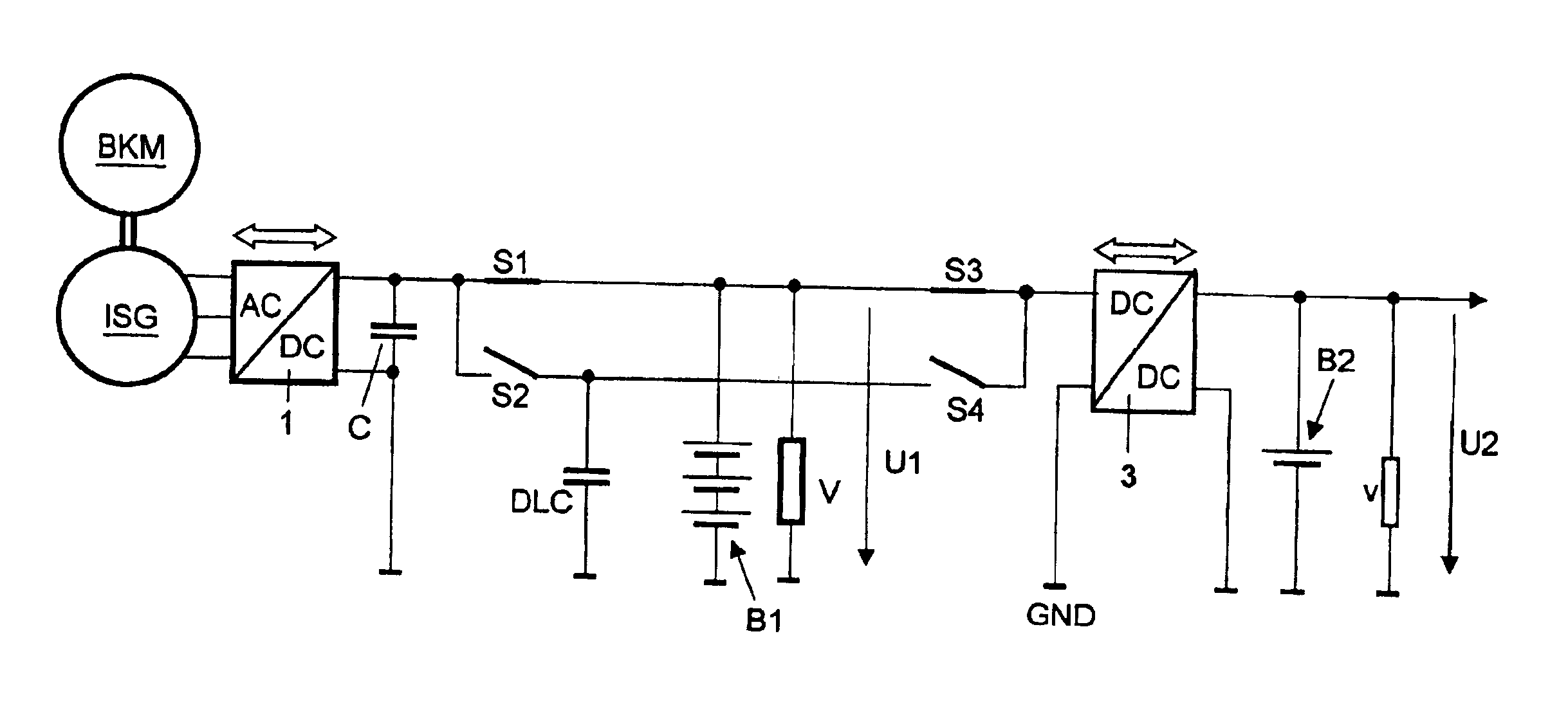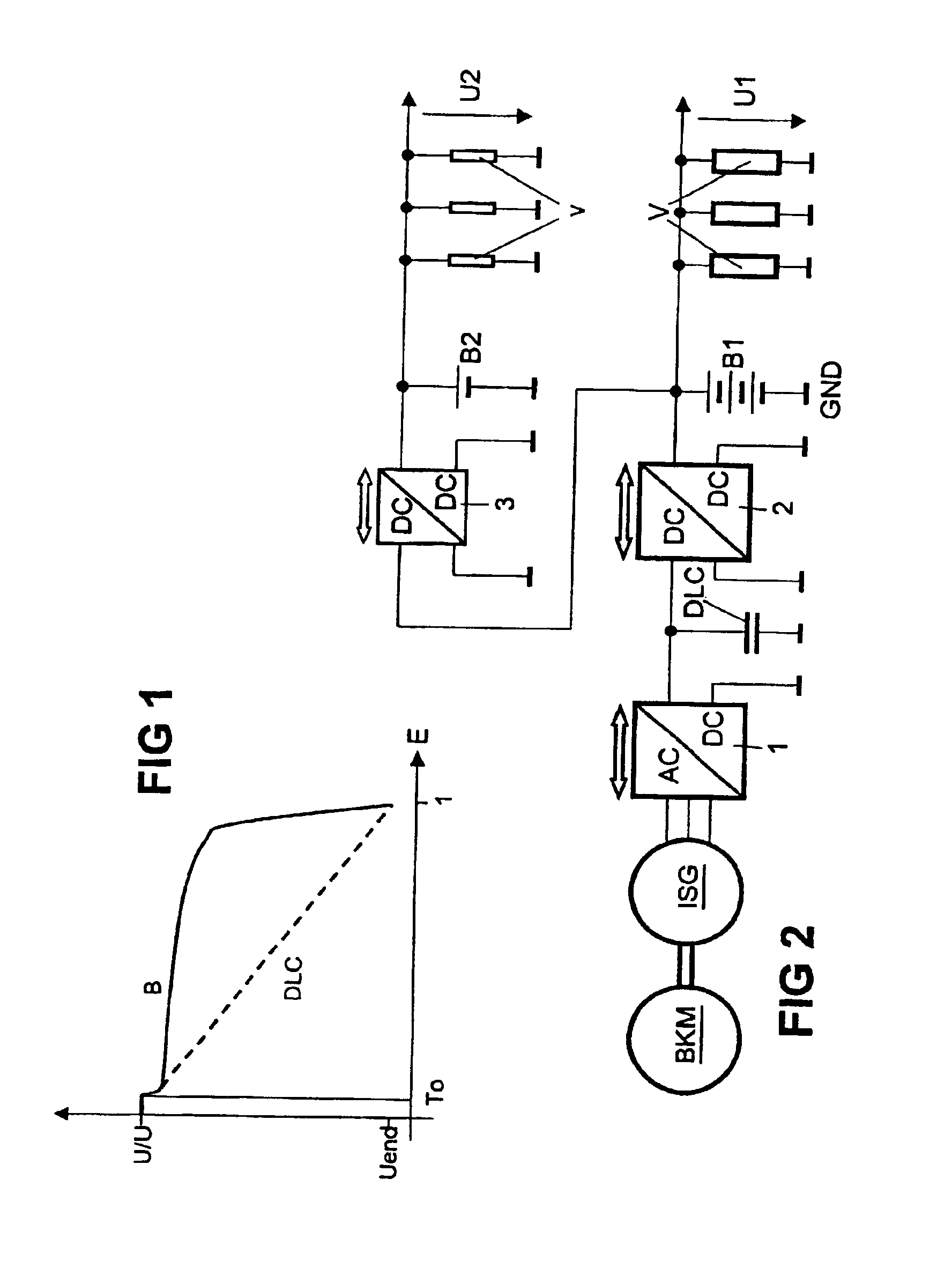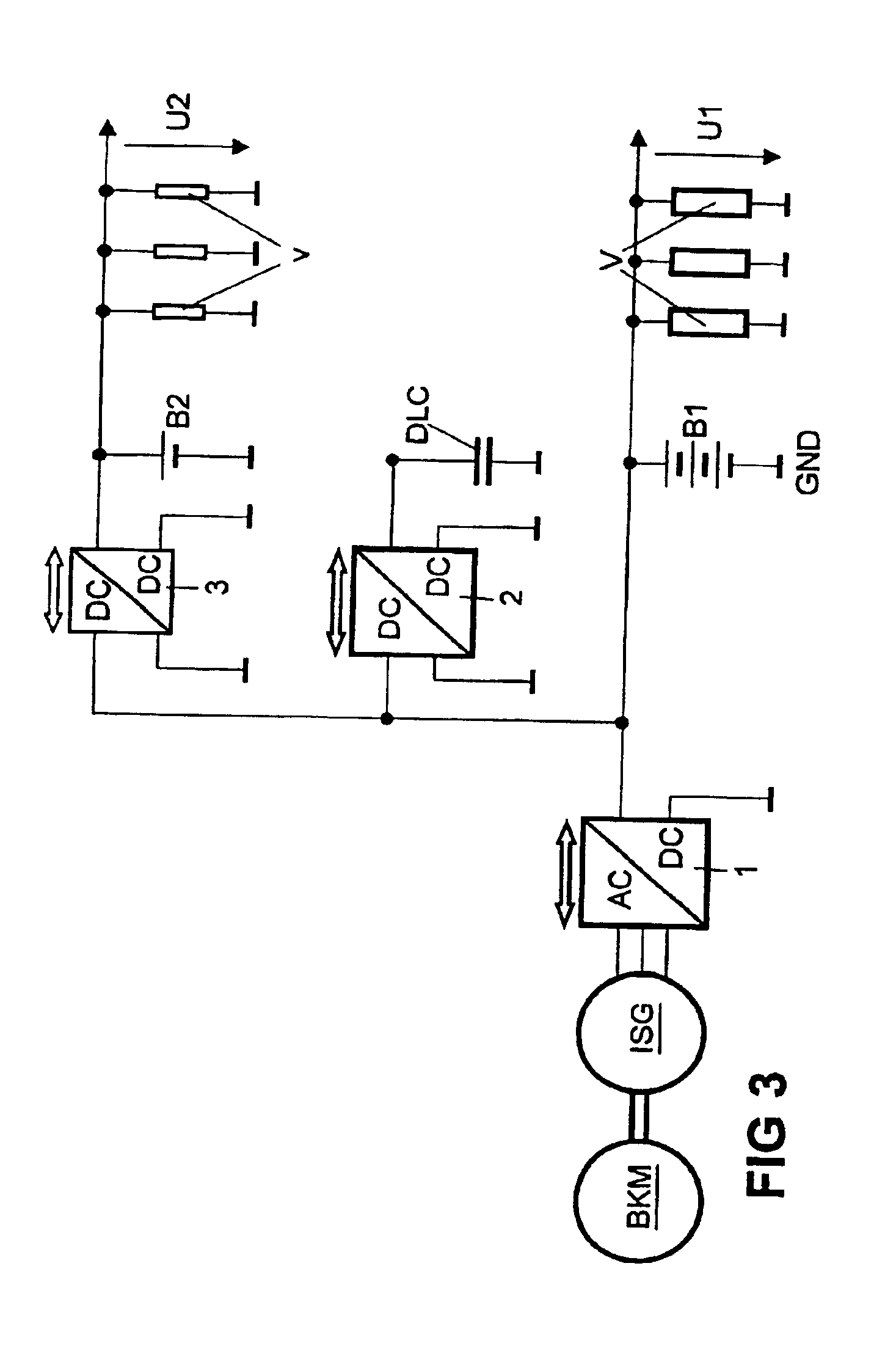Motor vehicle electric system
- Summary
- Abstract
- Description
- Claims
- Application Information
AI Technical Summary
Benefits of technology
Problems solved by technology
Method used
Image
Examples
Embodiment Construction
[0067]FIG. 1 shows the voltage characteristic during discharging of a double layer capacitor DLC (dashed line) and a lead-acid battery B (solid line). The difference in the voltage characteristics of the capacitor and battery from time To means that it is not possible to join the two storage mechanisms directly in a vehicle electric system. They can only be joined using an additional actuator.
[0068]FIG. 2 shows a circuit diagram of a known 42 V / 14 V motor vehicle electric system having an integrated starter-generator ISG in which a double layer capacitor DLC is used and in which a bi-directional DC / DC converter 2 is employed as additional actuator between said double layer capacitor and a 36 V battery B1.
[0069]The operations carried out using this circuit are controlled / regulated by a control / regulation circuit (not shown).
[0070]The integrated starter-generator ISG is an asynchronous motor that is coupled mechanically to an internal combustion engine BKM and is connected to the doub...
PUM
 Login to View More
Login to View More Abstract
Description
Claims
Application Information
 Login to View More
Login to View More - R&D
- Intellectual Property
- Life Sciences
- Materials
- Tech Scout
- Unparalleled Data Quality
- Higher Quality Content
- 60% Fewer Hallucinations
Browse by: Latest US Patents, China's latest patents, Technical Efficacy Thesaurus, Application Domain, Technology Topic, Popular Technical Reports.
© 2025 PatSnap. All rights reserved.Legal|Privacy policy|Modern Slavery Act Transparency Statement|Sitemap|About US| Contact US: help@patsnap.com



